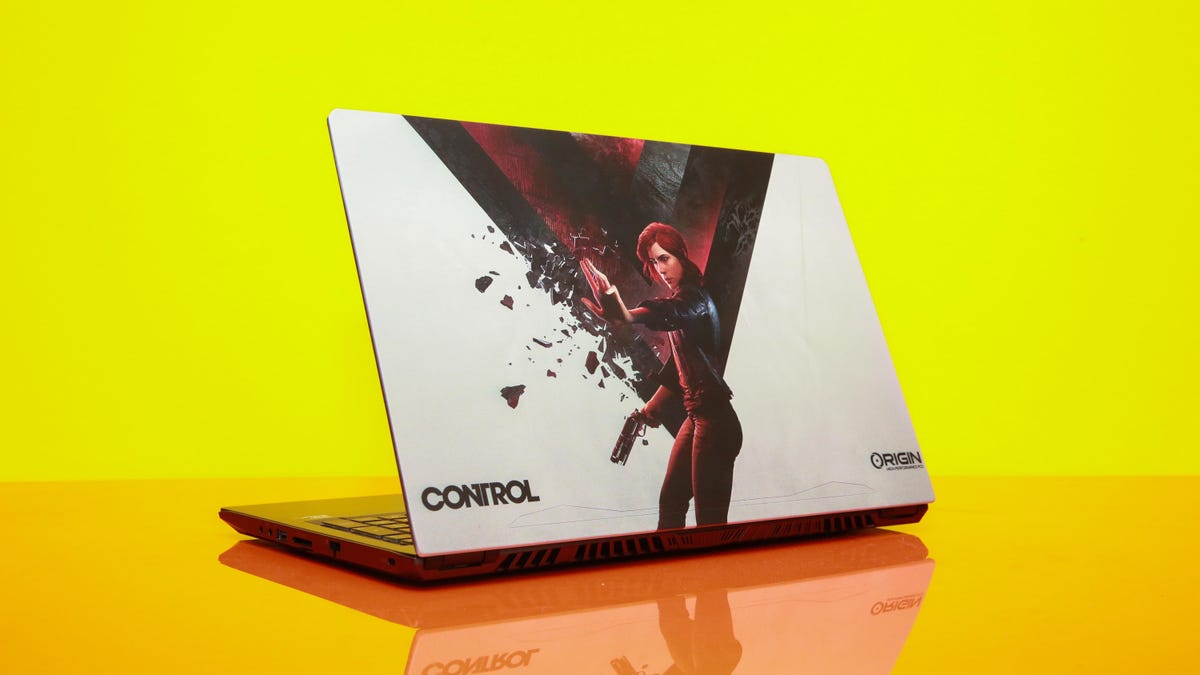Big laptop battle: Razer Blade Pro vs. Origin PC Evo16-S
For your consideration, two slim gaming laptops with RTX 2080 graphics and big screens.

The 16-inch Origin PC Evo16-S.
Some gaming laptops go for heft and size, hitting us up with more power than any (current) game needs. The Alienware Area-51m and Origin PC Eon17-X comes to mind, as does the upcoming Asus Mothership. Others go for portability, sacrificing screen size and muscle for a smaller footprint, like the Dell G5 15.
But what if we could get the best of both worlds? A gaming laptop that was reasonably slim and portable, but also powerful, and with a screen larger than 15 inches? I've seen a few systems like that, such as the Asus Zephyrus, and recently I've had a chance to spend some extended time with two others, the updated 2019 version of the 17-inch Razer Blade Pro and the also-updated 16-inch Origin PC Evo16-S.
Both are powered by Nvidia's latest RTX 2080 Max-Q graphics cards, both have a 2.6GHz Intel Core i7-9750H GPU, and both are very, very expensive. Note that both are also configurable, so you can buy them with an array of different components, and that's one of our first
The 17-inch Razer Blade Pro.
Customization
As currently configured (and built-to-order PCs can change price frequently, depending on component supply), the Evo16-S is $2,835. I originally assumed that didn't include the snazzy custom lid promoting the upcoming video game Control, but Origin PC tells me you can indeed get that lid art for that price.
The system starts at around $1,800, and between graphics, processors and storage options, there are dozens of different possible configurations. Some lid design options can run $150-$250 extra, but every one I've seen looks great, with an automotive-like color finish or intricate design.
The Razer Blade Pro offers only three configurations, each with a different GPU, from $2,499 for an Nvidia RTX 2060 to $2,799 for the RTX 2070 Max-Q to $3,199 for our test unit with the RTX 2080 MAx-Q. All three models have 16GB of RAM and a 512GB SSD.
One thing you can't change on either one right now is the display. Both have a 1,920x1,080 144Hz non-touch display. Razer's looks better, and it's one inch larger (measured diagonally), but the Origin PC's screen bezel is much thinner than on some of the company's previous laptops.
Design
Making gaming laptops is a tough, capital-intensive business. Even more so if you want them to look nice. Razer is one of the only relatively new names in the laptop game that came in with completely new, custom-designed hardware. It's been high-design from day one and has only improved with each generation. The current 17-inch Blade Pro is a big step over the previous model, with a tinnier screen bezel, smaller footprint and (finally!) a touch pad in the right spot, under the space bar.
Compare that to the Evo16-S, which isn't nearly as slick and modern-looking. That's because nearly every small to midsize boutique gaming PC builder creates their laptops from the same small collection of premade bodies, often from companies like Clevo. The machines get spruced up with overclocked components, custom lids and software and hardware tweaks, but they're almost always stuck with stock keyboards, touchpads and displays, which are never fantastic.
But the Evo16-S does have one extra trick up its off-the-shelf sleeve. The company has been innovating in custom colors and paintjobs on its desktops and laptops for years. This unit had a custom graphic from an upcoming game called Control, and it looked amazing, with rich colors, edge-to-edge coverage. These custom graphics add a lot to the cost, though. And it's a bold move tying your $3,000 laptop's identity to game that hasn't even been released yet.
Gaming on the Blade Pro.
Performance
Same GPU, same CPU, some differences in RAM and storage. It should be no surprise that the performance scores for both these laptops were similar. The Razer was faster in some tests, the Origin PC was faster in others. In most cases, they were in the same ballpark.
Geekbench 4 (multicore)
Cinebench R15 CPU
PCMark 10 Pro Edition
3DMark Fire Strike Ultra
3DMark Time Spy
3DMark Port Royal (RTX)
Far Cry 5 (fps)
Video playback battery drain test
This is less of a pure head-to-head than a comparison between two laptops that share plenty of similarities but also have a lot of differences. One is sleeker, but it's also more expensive and less configurable. The other has a keyboard, touchpad and other built-in features that you'll never love, but is much more configurable and potentially less expensive if you pick your parts wisely.
System Configurations
| Razer Blade Pro 17 | Microsoft Windows 10 Home (64-bit); 2.6GHz Intel Core i7-9750H; 16GB DDR4 SDRAM 2,667MHz; 8GB Nvidia GeForce RTX 2080 with Max-Q Design; 512GB SSD |
|---|---|
| Origin PC Evo 16-S | Microsoft Windows 10 Home (64-bit); 2.2GHz Intel Core i7-8750H; 32GB DDR4 SDRAM 2,666MHz; 8GB Nvidia GeForce RTX 2080 with Max-Q Design; 512GB SSD + 2TB HDD |
Laptops with the best battery life: See the top laptops and 2-in-1 PCs with the longest battery life.
Fastest gaming laptops, ranked: All the most-powerful gaming laptops tested in the CNET Labs.
More news and reviews for PC and Mac laptops, tablets and desktops.

